

1. Aranda/Lasch
Who knows what time will do to Benjamin Aranda’s recent statement that he and his partner Chris Lasch “learned to be the architects we are from a bird-keeper in Brooklyn, a basket weaver in Arizona, and a big billboard in Queens.” Whatever it means exactly, it certainly sums up Aranda/Lasch’s thinking, which won them a Young Architects Award this year from New York’s Architectural League. Aranda/Lasch’s mostly conceptual C.V. includes film and video work, a sold-out manifesto (titled Tooling), and a winning prize in a competition for which they dreamed up a mammoth drive-through version of Las Vegas.
917-534-9767
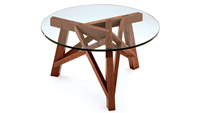
2. Atelier Viollet
Woodworkers are just as prey to trends as fashion designers—witness the disparate craft traditions of Arts & Crafts, Danish modernism, and minimalism, to name but three. What’s remarkable about Jean-Paul Viollet, the French-born-and-taught furniture maker, is that he creates pieces that dovetail numerous design aesthetics and yet he maintains a sense of individuality. Hinting at French Deco masters like Andre Sornay and Jean-Michel Frank as well as the laser-precise shapes of contemporary design, the chairs and tables of Atelier Viollet are impeccably, ingeniously joined—testament to the generations of Viollets who have been woodworking since the early-nineteenth century.
718-782-1727
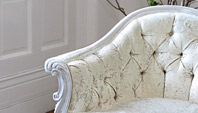
3. Custom Resource
Usually, when people talk about marrying contemporary and traditional design, they don’t mean it as literally as do the founders of Brooklyn’s Custom Resource, Billy Cotton and Isaac Lubow. The two men, who studied industrial design at Pratt, will take, say, a battered antique table and coat it with enough conversion lacquer to produce what looks like a just-off-the-assembly-line modernist gem. The men, who also do custom-fabrication work for other designers, are becoming known for their puckish elegance—evidenced by the vintage sofas they’ve re-created by covering the upholstery with crackly upholstery paint, or their milk-carton vase made of a crumpled carton cast in porcelain.
718-858-2263
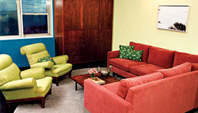
4. Adrienne LaBelle
If this young Brooklyn-based designer doesn’t make it in design (a highly doubtful turn of events), she could easily turn to film, so clever, spirited, and spare are her interiors. With a whimsical but sophisticated use of color, Adrienne LaBelle celebrates a healthy sense of kitsch that most decorators do their best to repress. She went to the Rhode Island School of Design and worked with prominent designer DD Allen, but LaBelle’s formative design experience was decorating a dollhouse when she was a teenager. That early project still comes through in her interiors, where solid, sensible grown-up design, whether modern or traditional, gets just the right shot of adolescent fun.
adriennelabelle.com

5. Amy Lau
Scaling the long stairs to the top of a designer showhouse can feel like a trek up a mountain whose views only get worse. But a welcome surprise awaited those who made it to the top floor of this year’s Kips Bay Decorator Show House—a turquoise and lime-green party room by Lau. One of the founders of Design Miami, which runs concurrent with Miami’s monster Art Basel fair, Lau mixes a serious connoisseurship of modernist furnishings with a love of the offbeat, eccentric, and just plain kitsch. She’s also a big proponent of desegregating art and décor. For Lau, décor is like a cocktail party. You want the right people; on the other hand, the more, the merrier.
212-645-6168

6. Pepe López
Many of the established uptown decorating firms are racing downtown claiming a long-buried love of modernism, but one man is making the reverse commute. Brown- and Columbia-educated López oversaw Alan Wanzenberg’s thriving decoration business. Now on his own, the low-key López is still a modernist at heart, but has been gaining (and relaying) an appreciation for the wealth and variety of proportions and details found in pre-Bauhaus styles. The result is thoughtful, clean rooms with an artful sense of color and connoisseurship. Borrowing freely from many schools, López puts things in sober but sublime perspective.
212-563-7900

7. Gal Nauer
An Israeli-born architect, Nauer is a tortoise in a design world populated by hares whose flashier projects win the public’s attention. After working for years for the Elad Group in Israel, she came to New York in the late nineties and oversaw thoughtful residential conversions on historic buildings on Astor Place and Ladies Mile. Now she’s got the conversion to top all conversions: Nauer is the design architect for Elad’s monumental conversion and renovation of the Plaza, which she is revamping with elaborate parquet floors and Belle Epoque mosaic bathrooms. So far, no sign of ego.
212-213-8444
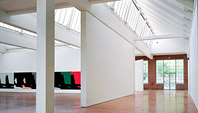
8. Galia Solomonoff
Although household-name architects turn out museums sometimes better at being works of art than showing them, one of today’s most compelling new buildings was done by a woman who still remains a complete unknown. The New York architect Galia Solomonoff won the commission to make a Nabisco factory in a depressed town into Dia:Beacon. Dry and smart, Solomonoff attended Columbia’s architectural school and has worked at the city’s Department of Buildings as well as for Bernard Tschumi and Rafael Viñoly. She describes herself as having “a working-class sensibility and a privileged education.” Head on the ground, feet in the clouds: the perfect position for an architect.
212-337-3700
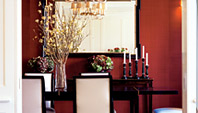
9. Sara Story
Good taste: Either you’re born with it or you get a job working for Victoria Hagan and pay close attention. If you’re lucky, you get both. Interior designer Sara Story was born in Japan and raised in Texas and California, so there’s a big American sense of style and color to her interiors, but it’s toned down with Asian refinements, modern-furniture touches, and a well-bred, classic-six sense of decorum. It’s not everyone who can cross uptown and downtown sensibilities and not end up somewhere in Murray Hill, but luckily for her, Story has a good sense of direction.
212-228-6007
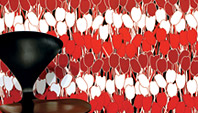
10. twenty2
It pays to be in the right place at the right time. Riding the wallpaper resurgence, Kyra Hartnett and her husband, Robertson, principals of the youthful all-around design shop twenty2, made their first splash in 2003 with a small line of hand-printed wallpaper, a success they followed up the next year with fabrics. The collection has kept growing. This weekend, twenty2 debuts carpet designs with AM Collection at the International Contemporary Furniture Fair. What makes twenty2 so special is how Hartnett and Robertson blend color, pattern, sophistication, and wit, all tied up with a late-modernist bow, in everything they do.
888-222-3036

11. Rob Wynne
The artist Rob Wynne has been making art for almost 30 years and is in the Whitney Museum’s permanent collection. But lately, he’s achieved success in a different realm. His witty and whimsical small sculptures or mantel-size works ended up in three rooms at the current Kips Bay Decorator Show House. His pieces are both dark and cheery (like the white glass snake and huge ceramic fly at the showhouse), but Wynne is unfazed by his latest fan base. “Art is sort of decoration—isn’t that how people use it?” he wonders. “I’m not afraid of being either deep or meaningless— I swing both ways.” Wynne’s gallery is Raphael Castoriano Fine Arts.
212-689-1020